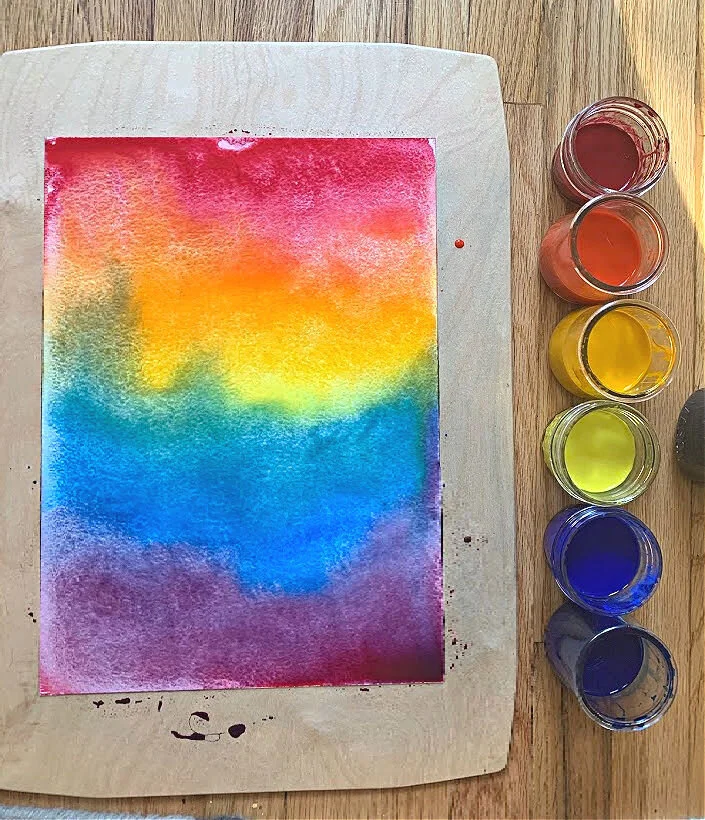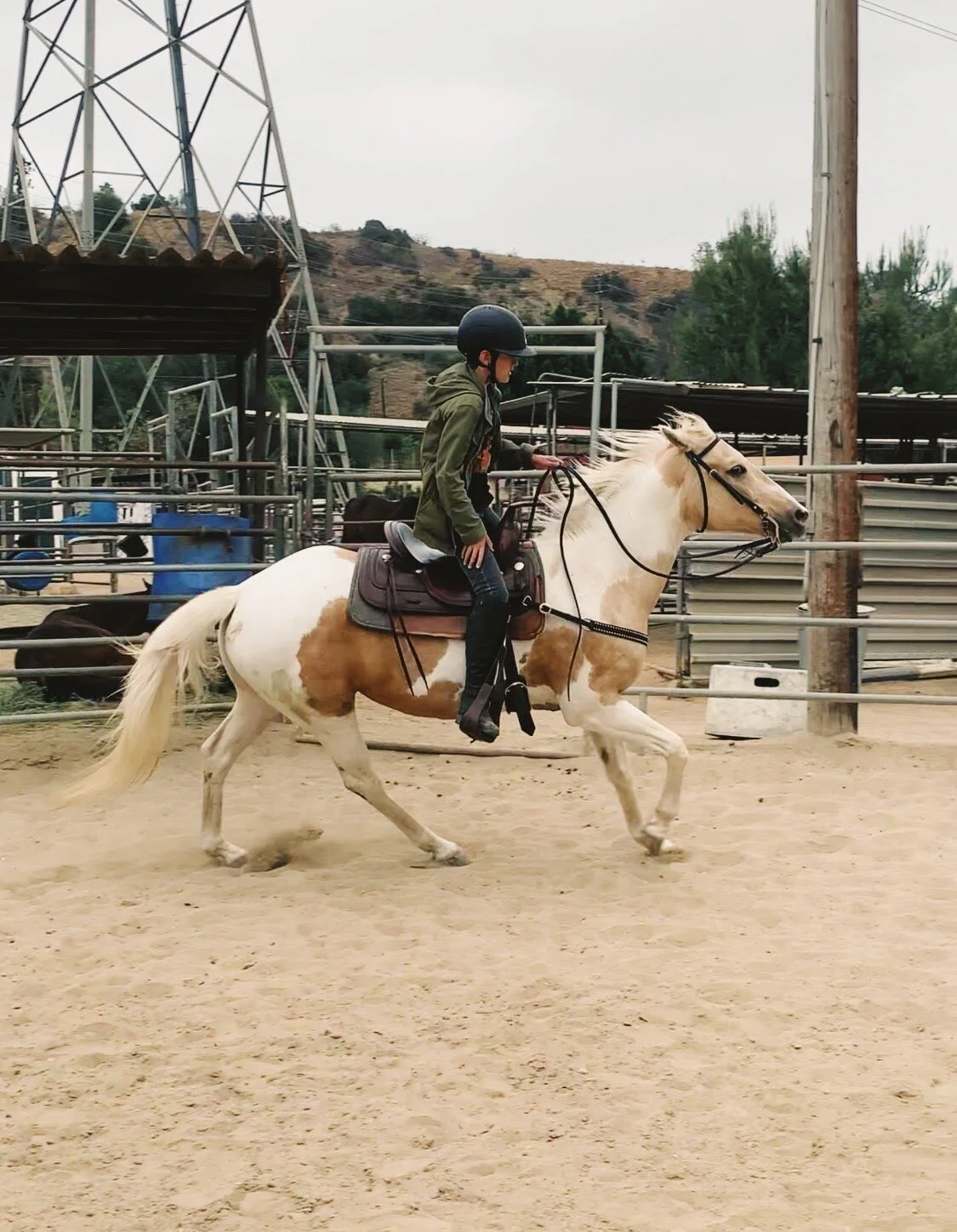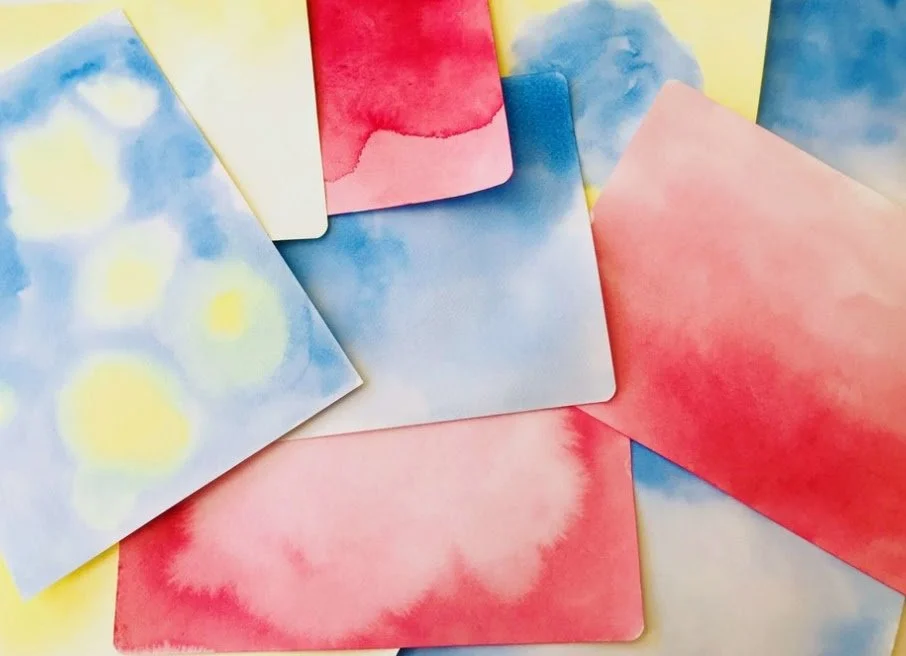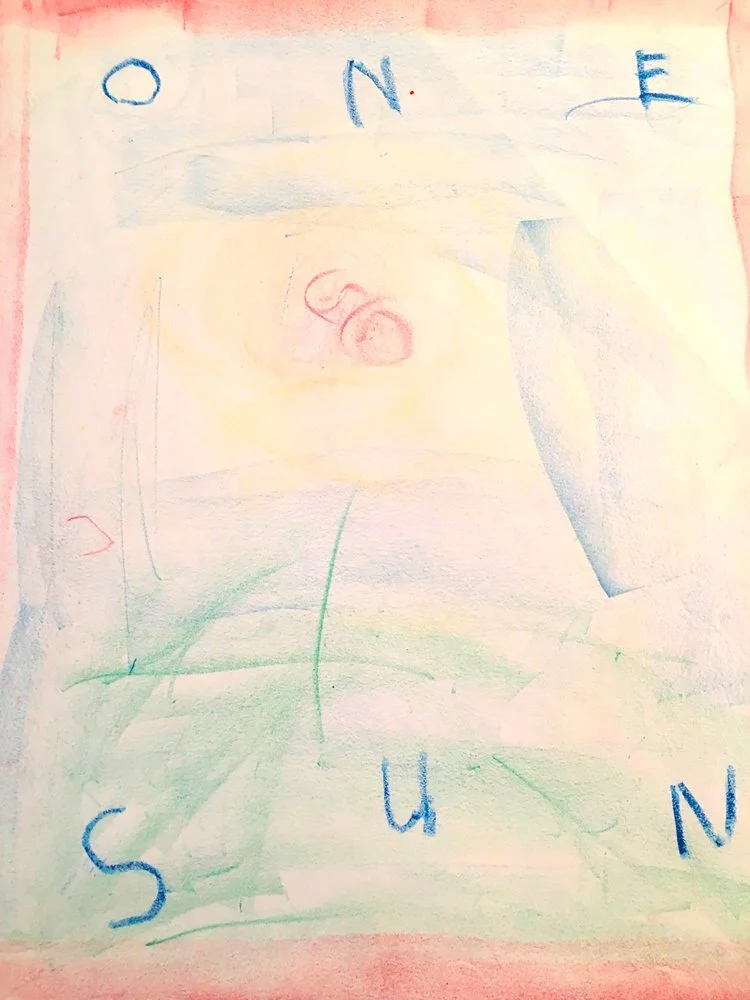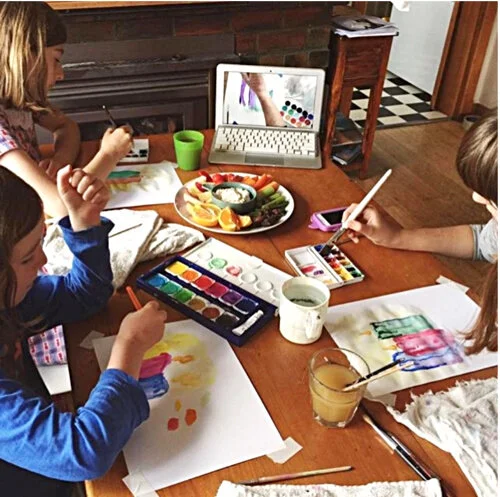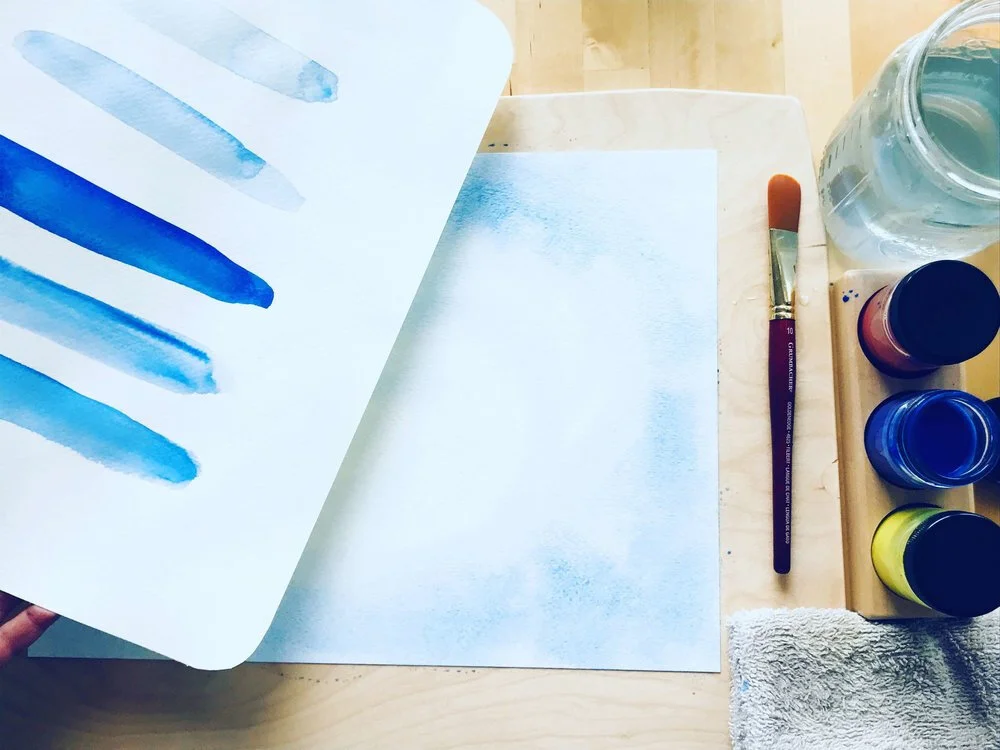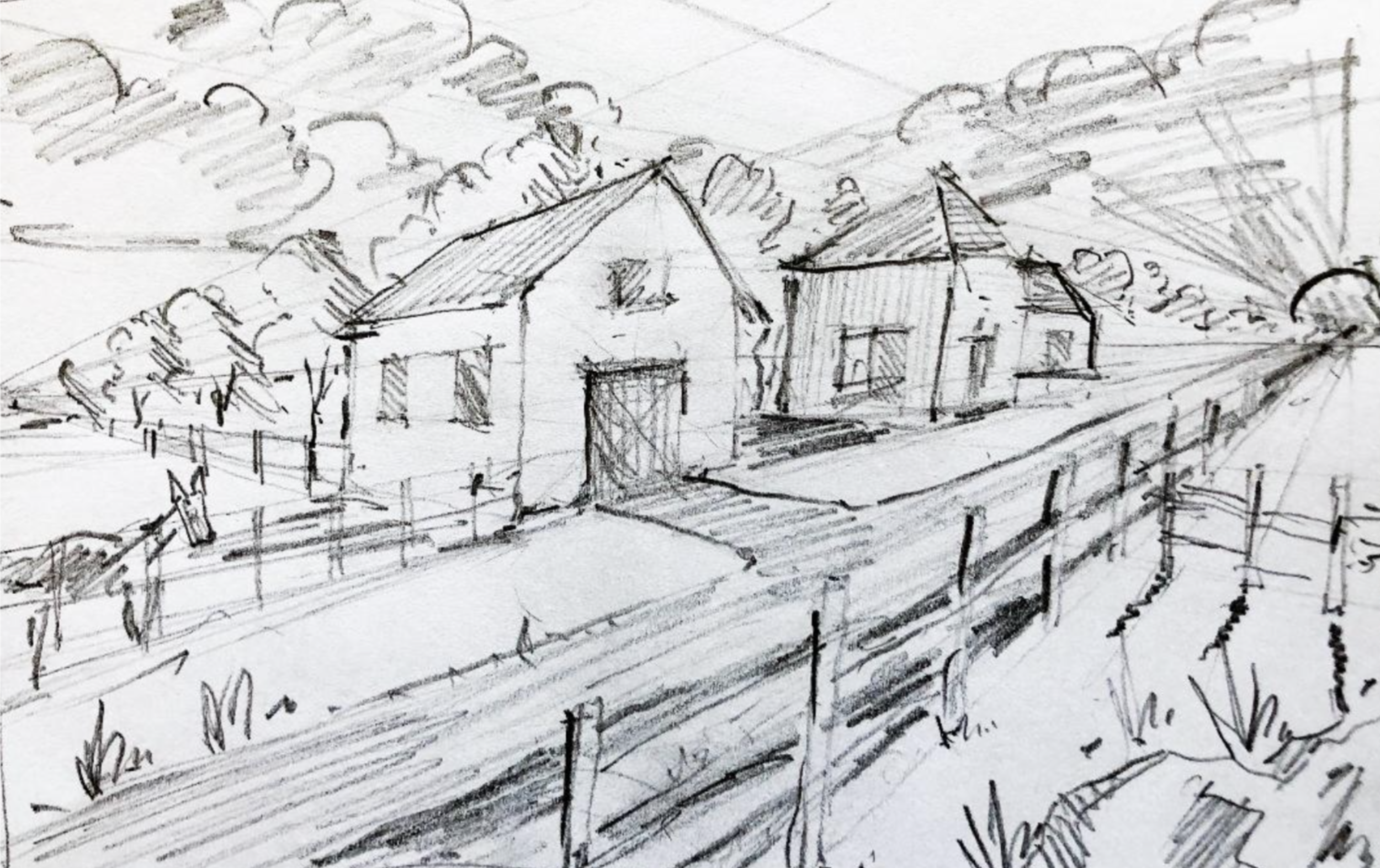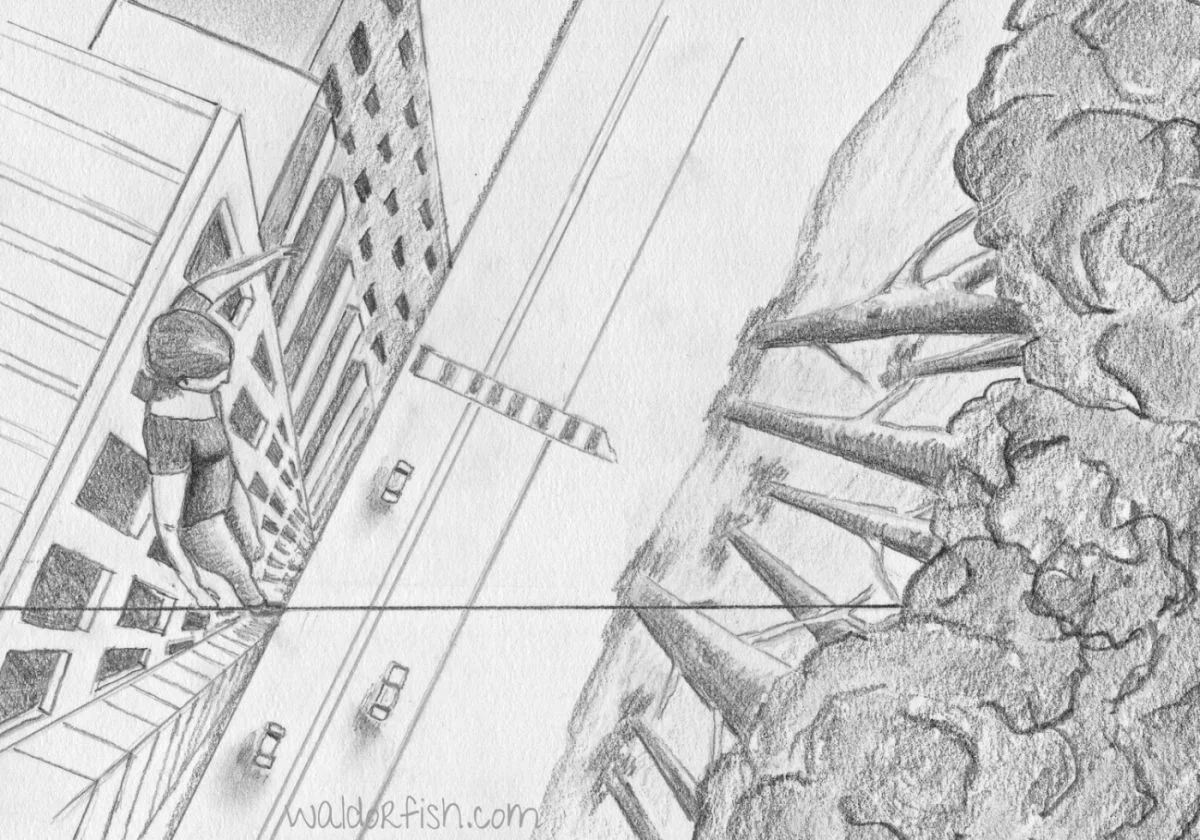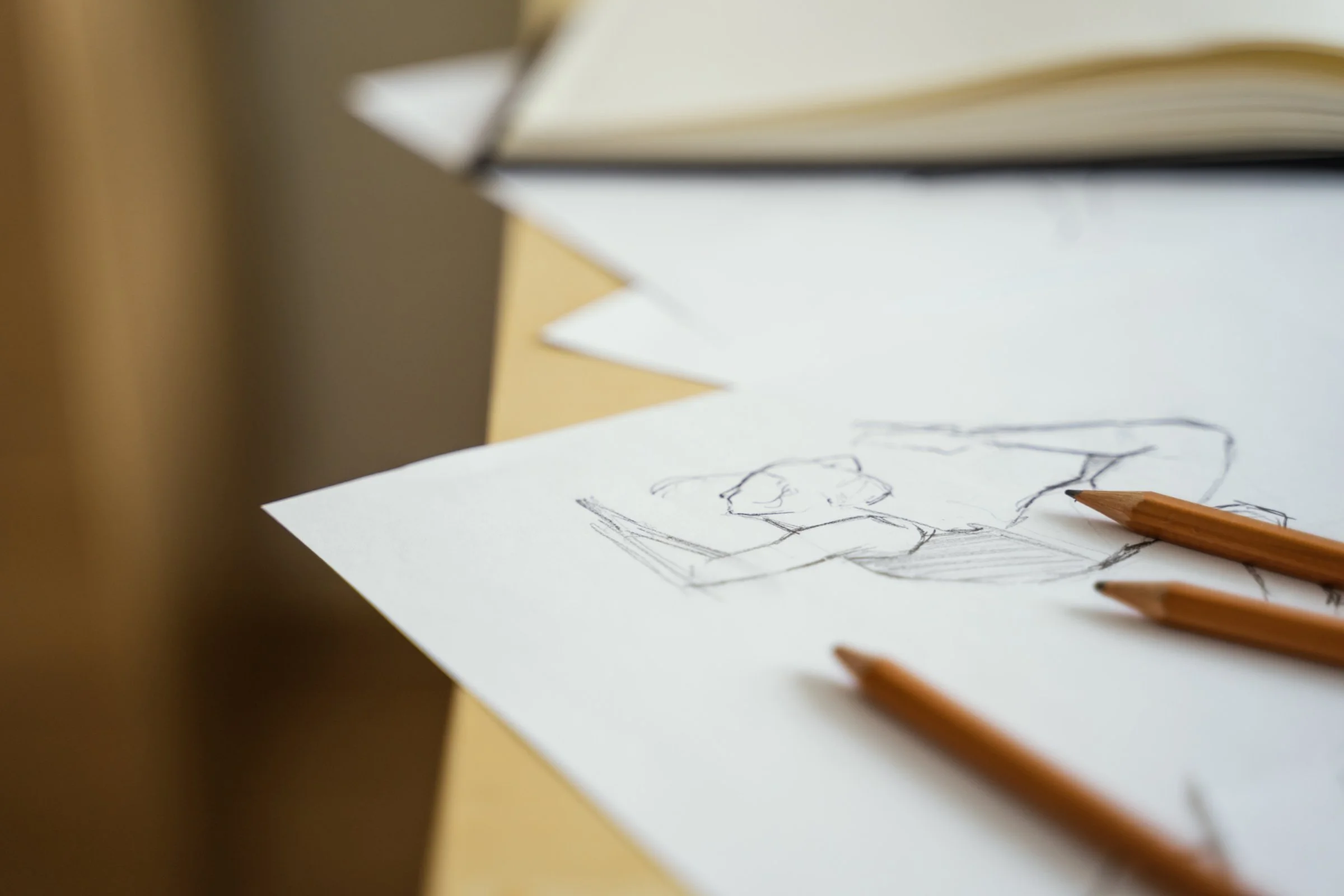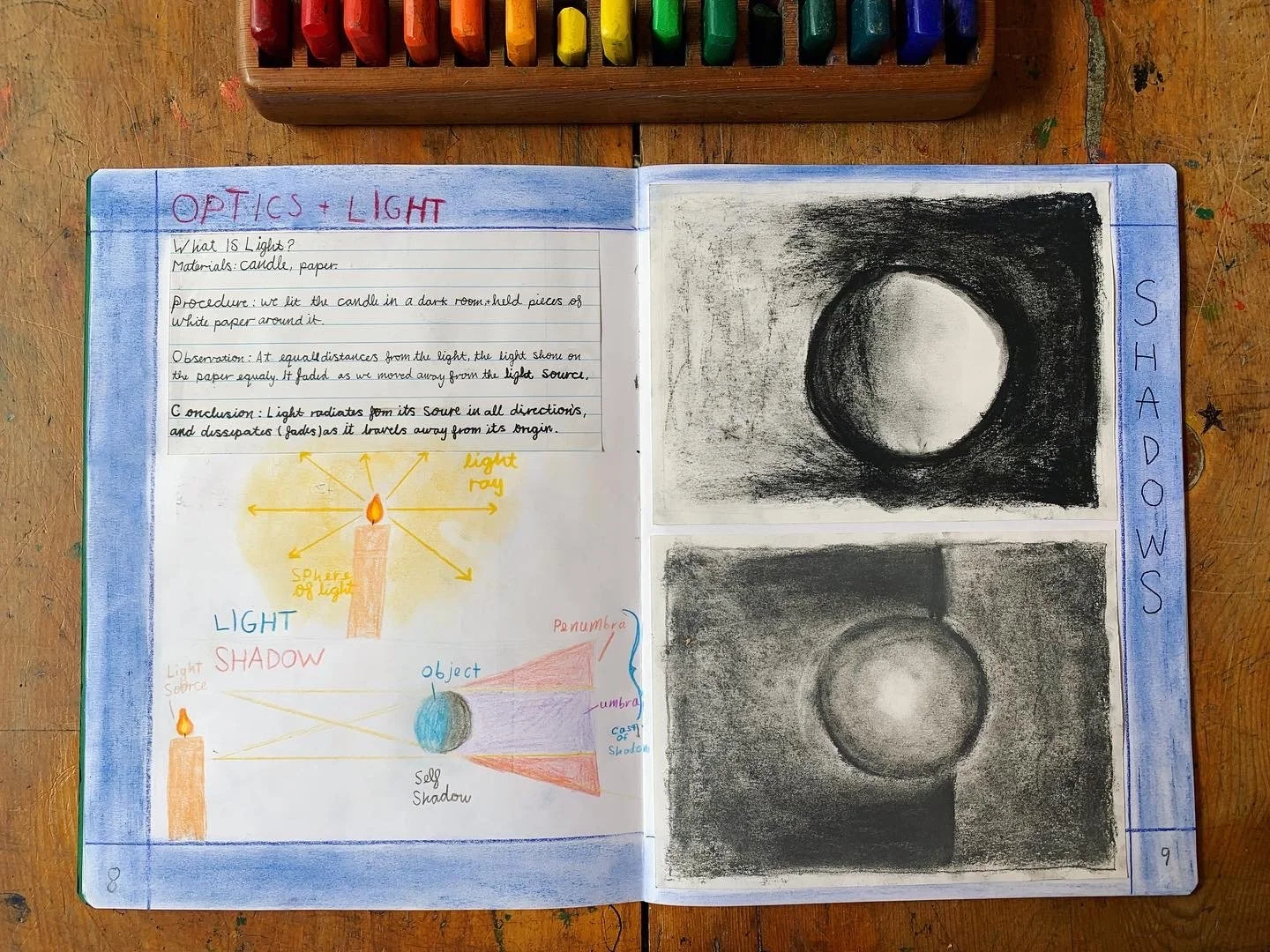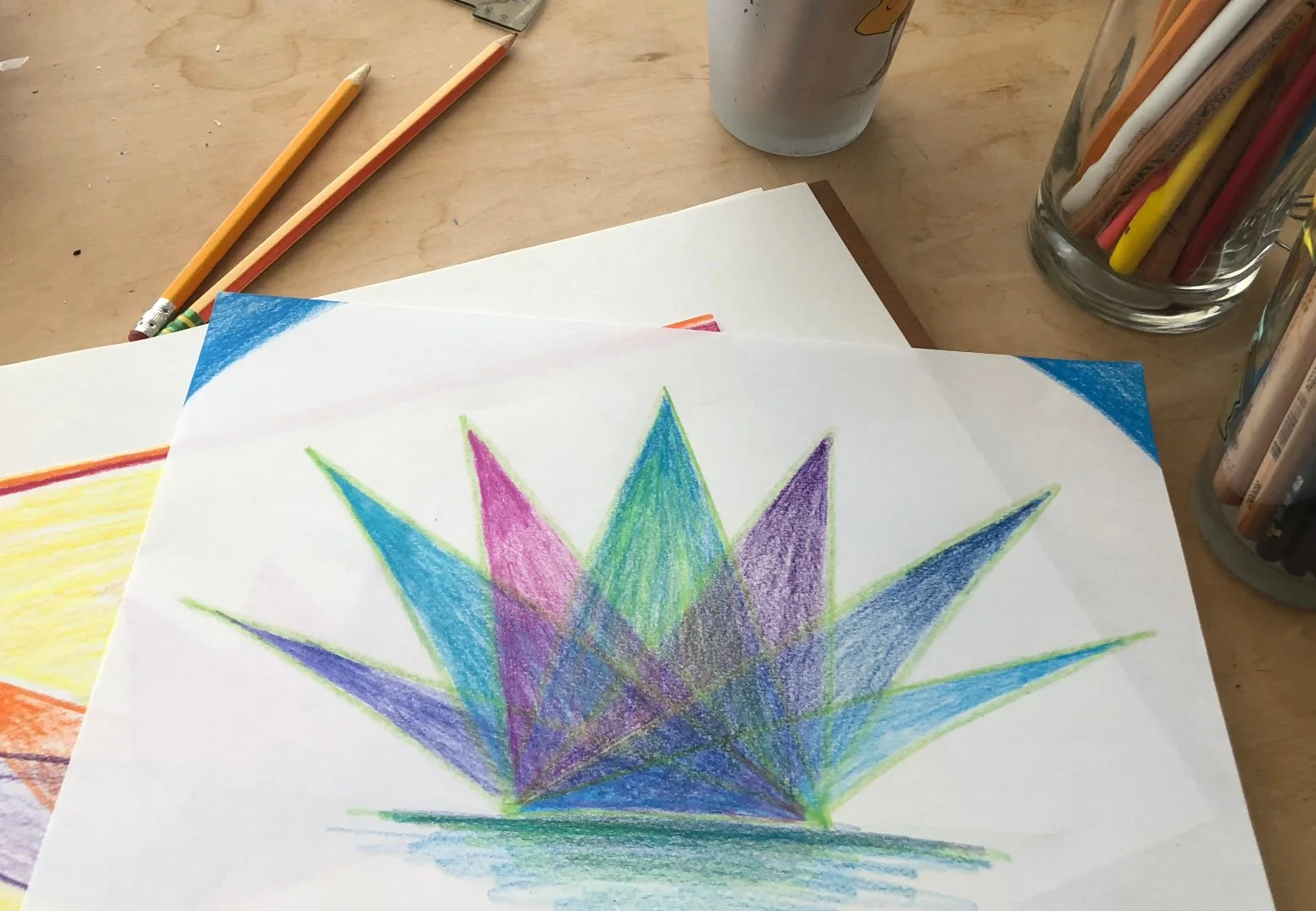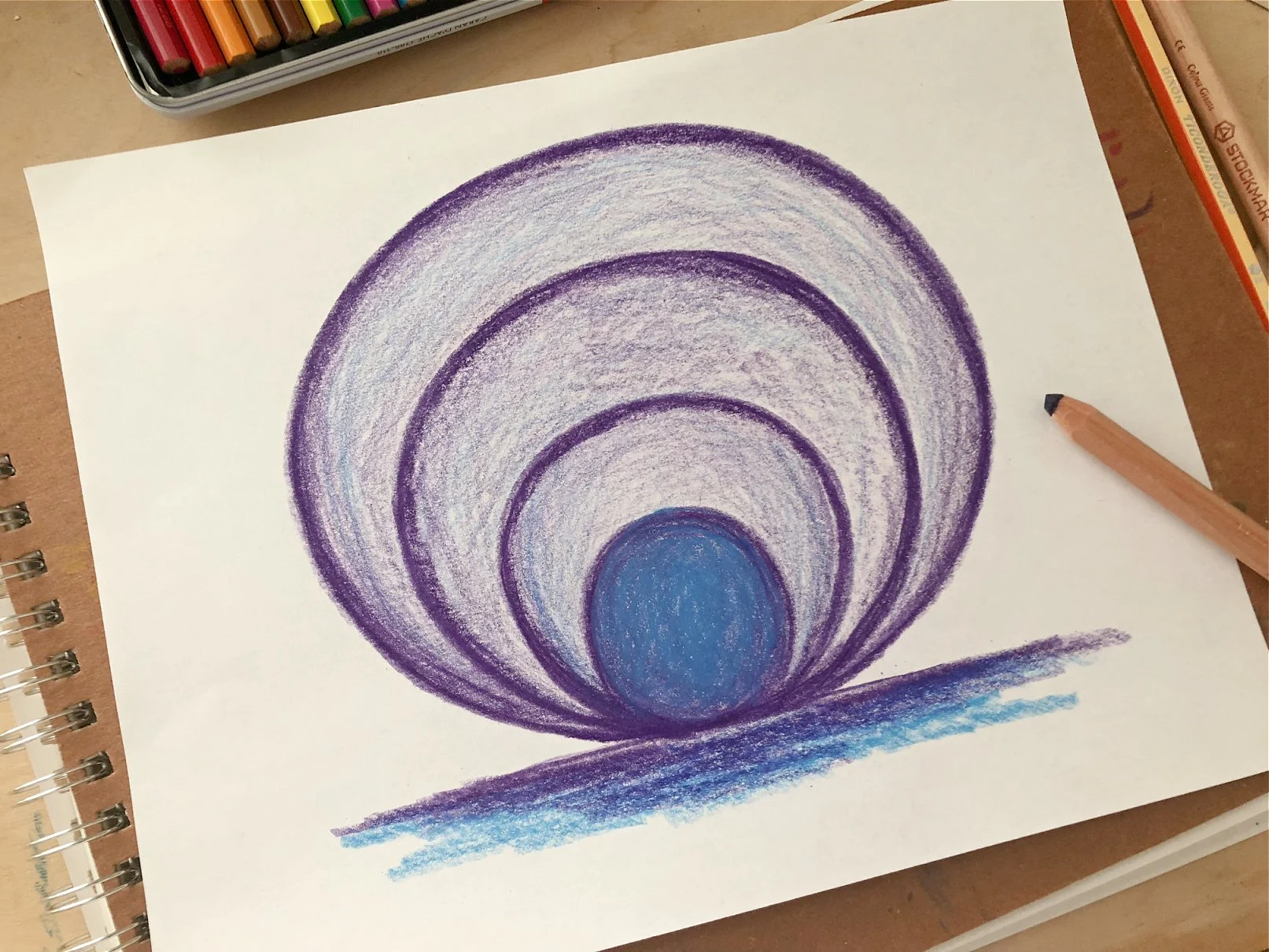
Waldorfish Blog
Waldorf Grade Two Painting: Coming into Form
What forms can we find in the color?
In first grade, the experience of painting becomes a formal and rhythmical experience.
Colors are introduced very slowly and purposefully; each is given a personality and mood. The unfolding of color in this way allows the children to build a connection to each as individuals. In the Grade One painting course, the colors carmine red, lemon yellow, and ultramarine are introduced and worked with through the use of verse and song. (To learn more about first grade painting and the philosophy behind it, click here!)
“Forms by themselves are of course stationary; they are motionless and stay where they are. But the moment the form has color the inner movement of the color sets the form in motion and the world’s ripples, spiritual ripples, pass through it. If you color a form you immediately give it a soul quality of a universal kind, because the color belongs to more than just the form...”
How does watercolor painting evolve with the growing second grader?
At this age, it is important to keep in the mind the child as they are now.
They are very much living in the innocence of early childhood and beginning to move away from it as they grow. First graders view the world in their wholeness and purity, while the growing second grader has a new capacity to see human nature in duality- the higher nature of humans, and the less virtuous parts of us as well.
Beautiful mountains in simple colors!
As the second grader views the world through a new lens, story becomes the main tool the teacher (whether they are in the classroom or at home) uses to introduce and build connection with color. With the stories of Noble People, animals, and fables, the teacher is meeting the child where they are, showing them the different aspects of how human beings can live and influence the world in which we live. These stories are examples of how humans can choose to act in their higher nature, and not live in the more “animal” nature of mischievous or dark aspects of the human being.
“...The color the individual form is given links it up with its surroundings; in fact it links it altogether in the world. You could say that when you color a form you should feel that what you are doing to the form is ensouling it. You are breathing soul into dead form when you give it color.
-Rudolf Steiner”
At this age, children still have rich and active imaginations, and with story and verse, the essence of colors are introduced, allowing the children to forge a connection with the color on a deep level. Carmine red is strong and fiery, golden yellow is warm, and stronger than the lemon yellow, and prussian blue has a new and more individual quality than the ultramarine, especially when it meets another color on the page.
Beautiful tulips from our second grade painting course.
The meeting of these new secondary colors is a new and essential experience for the second grader.
The children view not only how colors are as they stand alone, but how they are as they meet. How do they relate to each other? To their peers? What combinations create something beautiful or murky? Here again holds the theme of duality that the second grader is beginning to experience within themselves and observing in the world around them.
With duality, the second grader begins to paint forms- landscapes, the ocean, sunrises and sunsets, streams, and more. Through painting, the world comes into form, for example, the shades of blue become the waves of the ocean, the yellows form into happy flowers, and the reds flames of fire. As the child forms, and views the world, so does their experience in painting class.
Are you interested in bringing watercolor painting to your (home)school curriculum? Check out our Grade One and Grade Two painting courses! Our amazing instructor Amanda Mercer has created online courses that provide everything you need to make weekly painting lessons a doable, fun, and meaningful experience.
About the Author
Amanda Ziadeh Mercer is a dynamic Waldorf Teacher! She has had the pleasure of working with children in varying stages of development, ranging from infants in Parent-Child programs to the more mature students of the eighth grade. This wide range of experiences has gifted her a full picture of the developmental stages of childhood.
More from Waldorfish:
Starting Waldorf First Grade
Let’s talk all things first grade!
In Waldorf education, there is so much emphasis placed on the transition from kindergarten to first grade, and in many ways, it’s for good reason! The child is ready to transition into the grades, and with that comes a need to approach things a little differently: structure, routine, storytelling, academics, art, and everything in between!
Feeling a little overwhelmed already at how to do it all, and keep yourself sane? We can help.
First, take a nice, deep breath.
Know that you don’t have to do ALL. THE. THINGS. to make a Waldorf grade one curriculum work for you and your child! (And if you’re totally new to homeschooling, click here!)
Start here with our resources and courses; they provide a wealth of information, guidance, and content to support your first grade planning! You’re not alone in this, we promise :)
Let’s get started!
Let’s start at the beginning: what is first grade art curriculum? What kind of artistic experience will the children enjoy in first grade, and what role does the educator play in creating a beautiful and supportive learning space?
We’ve put together this piece as a starting place for you - we’ll be answering frequently asked questions about Waldorf art in first grade, and providing you some helpful resources to help make your artistic journey doable, meaningful, and fun!
Painting with your first grade child can be a truly rewarding and enriching experience, and it’s easy to get started! Amanda Mercer (our amazing course creator!) and Robyn Wolfe (Waldorfish All-Things Creator) have written a piece that walks one through the “whys” of first grade painting; it’s all about creating a meaningful experience (while keeping it simple, - and who doesn’t love that?!)
“Painting lessons create opportunities for students to develop an intimate understanding of the colors through their imaginations, movement, and imitation. When the teacher brings the lessons in partnership with short verses and stories...the children live into each experience fully. ”
First grade form drawing can be incorporated seamlessly into your weekly curriculum. Need an introduction to form drawing in general? Rev Bowen, our form drawing course creator, has written the perfect post to get you inspired, and to get you started!
“The forms themselves, as finished works, may become beautiful, but they are not nearly as important as the processes through which we explore and embody the movements. Form drawings, as finished pieces, are merely the footprints left in a medium such as pencil on paper, evidence of the wonderful movements of the human being and the cosmos. Form drawing, as a practice, can be an essential path of human development.”
Children learn in many ways (through movement, music, and poetry…to name a few!) but one of the key ways a first grader learns is through the ancient art of storytelling!
Traditional first grade Waldorf curriculum uses stories to introduce each letter in the alphabet, each number, and many other aspects as well. Stories create connections, context, and enliven education in a very real way!
Now, you may be saying to yourself, “But I don’t know any stories!” or cringing at the idea of memorizing a fairy tale everyday for a lesson…
Here’s the thing: You already are a storyteller! Seriously!
Our dear friend Sara Renee Logan has written a series of posts that are sure to inspire, empower, and give you the confidence to start incorporating your own stories and others into your weekly routine. Trust us; you’ve got this!
We love all things art (can you tell?) and have been reminded time and time again of its value when it comes to enlivening academics with all things artistic.
Have you ever wondered where this approach comes from, and what, exactly, art does for a growing child? Our friend Cristina Havel has written a resource for you, illustrating the true impact of artistic curriculum in Waldorf education.
“Artistic endeavors sharpen two very important human skills: the ability to shape, or see, and the ability to perceive, or distinguish. When practiced over time using diverse techniques across a variety of subjects, something very special emerges: the ability to shape and perceive new ways of looking at the world.”
Waldorf Art for Beginners
First grade art curriculum can include many things: crayon, pencil, watercolor painting…so many options and fun mediums to choose from!
But, are you feeling a little stuck? Like there are too many decisions and things to figure out to incorporate art into your weekly rhythm?
We’ve got you covered! Check out our Waldorf Art for Beginners course; not only does it include a variety of techniques and mediums to work with, each lesson provides in-depth guidance and instruction; perfect for those just starting out!
Grade One Painting Course
Watercolor painting curriculum in first grade is truly unique, incredibly special, and completely doable for you to do at home with your child! It’s true!
Amanda Mercer, a Waldorf-trained teacher (and overall cool human) has created a truely supportive course for those wanting to bring watercolor painting to their first grader. Not only do the lessons include original verses and step-by-step guidance, they also show how to cultivate a calm, encouraging, and experiential mood with each progressing lesson.
Why wait to get started?
Click here for a free sample from Grade One Painting!
Does making form drawing a part of your weekly first grade rhythm sound... Exciting? Daunting? A little bit of both?
Remember, you don’t have to do all the things yourself; let us handle the form drawing curriculum for you!
Rev Bowen, a master Waldorf teacher, has created a course specifically for the first grade child that guides you through the ins and outs and hows and whys; everything you need to bring this rich Waldorf homeschool curriculum into your rhythm and routine!
Click here for a free Form Drawing Lesson!
Questions about any of these resources? You can contact us, here. We’d be honored to be part of your first grade year!
Perspective Drawing - Art in the middle grades
Teaching perspective drawing to seventh graders has always been a highlight for me.
This is one of those magical moments where the curriculum meets the students everywhere they need to be met.
Thirteen year olds are always right.
Just ask them ;)
A seventh grader is desperately trying to form his or her own point of view and beginning to understand that we all see the world through our own, unique lens. The most important concept of perspective drawing is the establishment of point of view. In perspective drawing, the artist must constantly ask "how would this look from my perspective?"
(Looking for guided support teaching this subject? Our course, Weekly Art Diving Deeper includes a series of step-by-step Perspective Drawing Lessons!)
The Horizon Line
The horizon represents the limit to how far the eye can see, assuming we can look beyond the buildings, trees, and mountains that might be in the way. In perspective drawing, the horizon is a straight line that establishes the "eye line" or point of view of the artist. In reality, we know that the horizon is not straight because the earth is round. We draw it as a straight line because that's how we perceive it. (More on perception versus reality later)
It's fitting that a seventh grader should grapple with the idea of learning to understand the world between him/and the flat horizon which, in turn, begs the questions: "What's beyond the horizon? and... Isn't the world round?"
Depth, distance, and creating from a certain point of view: this is perspective drawing!
Vanishing Points
In the sixth grade, students are often satisfied with isometric three dimensional drawing. All of the lines of an isometric box are parallel. It looks real! Life gets a little more complicated in 7th grade, however, as the students move farther away from the simplicity of childhood. The typical seventh grader begins to question everything (especially the teacher!).
When it comes to teaching perspective drawing, I like to teach by asking questions. "If the sides of this cardboard box are equal in length and parallel in real life, why do they look like they're getting closer together as they go off into the distance?" Soon they discover that straight lines going into the distance appear to line up with vanishing points on the horizon. Now they are ready to construct rules for drawing the world as it appears to us.
On more subconscious level, there is another phenomenon at play. As human beings, we can venture beyond the horizon in the physical world, and we can explore the depths of our inner selves. The vanishing point on the horizon mirrors the vanishing point inside each human being. Interestingly, both the horizon and the vanishing points are not fixed.
They are simply boundaries placed by the artist based on his or her unique perspective at a single moment in time.
Art as metaphor for life.
Why not try drawing from a different point of view?
Perception vs. reality
I love taking seventh graders through this journey of building a set of rules to create reality and then realizing that we need to keep bending the rules when a new piece of information is introduced.
"Why does it seem like there's more than one vanishing point?"
"Why does it seem like all the vanishing points change in reality when I move my eyes?"
"Is there really a point out there?"
Some students are happy to live inside the set of rules for perspective drawing and some edge closer to the idea that this set of rules is a convention that humans created. It's a method of taking our visual perception of the three dimensional world and putting it onto a two dimensional surface in a way that accurately represents the artists point of view at that particular moment in time.
The process is akin to learning a language in order to express your point of view. It's all the more valuable if our students can be guided towards developing this set of rules on their own. As they work with the drawing exercises, I encourage you to try not to give in to the temptation of TELLING them what they are experiencing. The questions that lead to the rules will naturally flow out of them if they are given many opportunities to EXPERIENCE the drawings!
—> Download Brian’s teaching notes, from his Perspective Drawing course for teachers at Rudolf Steiner College:
Content related to the middle grades:
Why Waldorf Chalk Drawing?
Chalk art in the Waldorf curriculum is a medium for extending the storytelling that is happening the classroom. It is a medium for enlivening the curriculum through pictures.
6 ways chalk drawings enliven the Waldorf curriculum:
Image: ©Waldorfish, all rights reserved
In Waldorf Education, it is always through storytelling that the images arrive. Surrounded by story, the children live into their imaginations and each will create mental pictures unique (and most meaningful) to them. Through the artistic activities that follow the review portion of a lesson, the children are able to live into the story experience again. Here they place their own feelings on it. This allows a true and unique connection to the content of the lesson.
“Ordinary everyday life can be portrayed in meaningful pictures and images. The teacher must fill with inner conviction and warmth the pictures he/she presents to the souls of the children. They can derive strength for the whole of their lives from lessons that stream from heart to heart rather than head to head.”
1.Nourishing the Senses
Chalkboard drawings are intentionally beautiful and calming. They offer a soft, sensory-rich visual experience that supports the development of aesthetic awareness and helps create a nurturing classroom or homeschool environment.
2.Engaging the Imagination
Rather than relying on abstract symbols or rote facts, chalk drawings speak in images, mirroring how young children naturally think and learn. This supports deep imaginative engagement, especially in the early grades.
Beautiful and temporary, chalk drawings support learning in multiple ways!
3.Supporting the Lesson’s Theme
Each drawing visually anchors the main lesson content - whether it’s a fable, a math story, or a historical scene. The image becomes a living memory picture that children carry with them, making abstract content more memorable and meaningful.
4.Modeling Artistic Process
Children observe that the teacher created the drawing by hand. This models care, creativity, and intention - and it can inspire children to take joy and pride in their own artistic work.
5.Creating Rhythm and Atmosphere
The chalkboard drawing sets the tone for a lesson block or season, helping children orient themselves rhythmically in time. It quietly says, “We’re entering this story now,” or “This is where we are in the year.”
6.Inviting Quiet Reflection
Because the drawings are temporary and made with care, they invite a sense of reverence. Children often return to the blackboard, sitting in quiet contemplation, taking in the image again and again. It becomes a subtle, sacred part of the learning space.
Looking for something?
Welcome to Waldorfish! We started this adventure in 2012 out of a desire to make Waldorf training more accessible to class teachers in remote locations and to homeschooling families everywhere! Read more, click here.
WE WON! Our Weekly Art courses were voted “best interactive art program.” Learn more about the award, here.
A few of our most popular blog posts:

